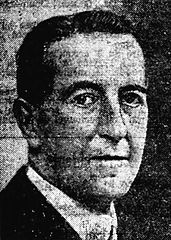Design
Design
Personality
Chart Properties
Your Cross represents the specific theme of your life. This cross embodies your unique potential & the lessons you're here to learn, providing a roadmap to fulfilling your life purpose.
We use the UTC birth time and date to do the calculations required to generate your Human Design chart.
Buy Tokens
Pay as you use, no expiry and no subscription required.Gunther Gebel-Williams's Biography
Polish-American animal trainer and circus performer, billed with the Ringling Brothers and Barnum and Bailey circus as the Greatest Wild Animal Trainer of all Time. Gebel-Williams had a twenty year career in the U.S. training and performing with Bengal and Siberian tigers, elephants, horses, leopards, pumas, zebras and giraffes. He performed with his family in the Red Unit troupe with 11,697 performances over 22 years. Just 5’4″ but with long golden hair, bulging muscles, and sparkling sequined suits Gunther captivated his audiences with his abilities to make wild animals obey his commands like domestic house pets. A star in Europe before moving to the U.S. he won the prestigious Ernst Renke-Plaskett Award, the “Oscar” of the European circus world, three times. By his gentle treatment of his charges, he changed the way Americans think about the circus and wild animals.
Gunther was raised in the eastern German village of Schweidnitz, now part of Poland. His father worked as a set designer for the theater. During WW II, his father left the family to fight at the Russian Front in the German army. He was captured and never heard from again. Gunther, along with his mother and sister, fled to Cologne during the Allied bombings of the city. After the war, he worked as an usher with a circus owned and operated by horse trainer Harry Williams and his wife Carola. The Williams noticed the young usher’s fascination with their work and soon took him under their wing. They patiently instructed the young man on the fine art of communicating to the animals without hatred, punishment, or malice. He learned never to strike a horse and that the two most important lessons in teaching animals were consistency and patience. In 1951, Harry Williams introduced his circus to England. During a reenactment of a Roman chariot horse race rehearsal, Williams injured his head and died 14 days later. His wife begged Gunther Gebel to manage the family circus and he adopted the Williams name as his own.
In 1968, Irvin Feld watched Gunther Gebel-Williams perform in Europe. He was amazed with the animal trainer’s abilities to command the animals without the use of whips and chairs. Clyde Beatty, the most visible lion tamer in the U.S. always provoked his tigers into performing. Feld offered Gebel-Williams an immediate position with the Ringling Brothers circus but Gebel-Williams’ loyalty to the Williams family circus was stronger. Feld bought the whole Circus Williams in order to secure his star wild animal trainer. Gebel-Williams biggest achievement was to train horses, tigers, and elephants to perform together since the animals naturally live in fear of each other. He worried that the tigers would instinctively lash out and attack the elephants during their performance. He tried to understand the personality of each individual animal and learn the right combination of rewards, rebukes, and reassurances that made each animals perform at its best. Despite his confidence in the ring, Gebel-Williams remained painfully aware that wild animals could revert to their killer instincts in an instant during a performance. While training the big cats, including the first white tiger on tour, he has had 300 stitches from animal fights. In 1983, at a performance in Seattle, Gebel-Williams made a mistake by wearing a tuxedo the tigers never had seen him in before that evening. The animals lunged at him in the ring as an intruder. He quickly removed his shirt so the tigers could smell his scent and recognize their trainer. He managed to escape a bloody death. He has lost teeth and bears deep scars from the huge animals, with which he has performed in 12,000 shows.
In 1982, his son Mark Oliver participated in the family act by riding a tame giraffe into the ring. On 11/18/1990, Gebel-Williams bid his final good-bye to the circus world in Pittsburgh, PA, turning over his whip to his son Mark. Over 12 million people have seen the performer billed “America’s Twentieth-Century Circus Hero.” For the following decade he continued to train his beloved cats, though not performing. He died of cancer on 7/19/2001 at his home in Venice, FL in the arms of Sigrid, 57, his wife of 33 years.
Link to Wikipedia biography
Gunther Gebel-Williams
Your Cross represents the specific theme of your life. This cross embodies your unique potential & the lessons you're here to learn, providing a roadmap to fulfilling your life purpose.
We use the UTC birth time and date to do the calculations required to generate your Human Design chart.






